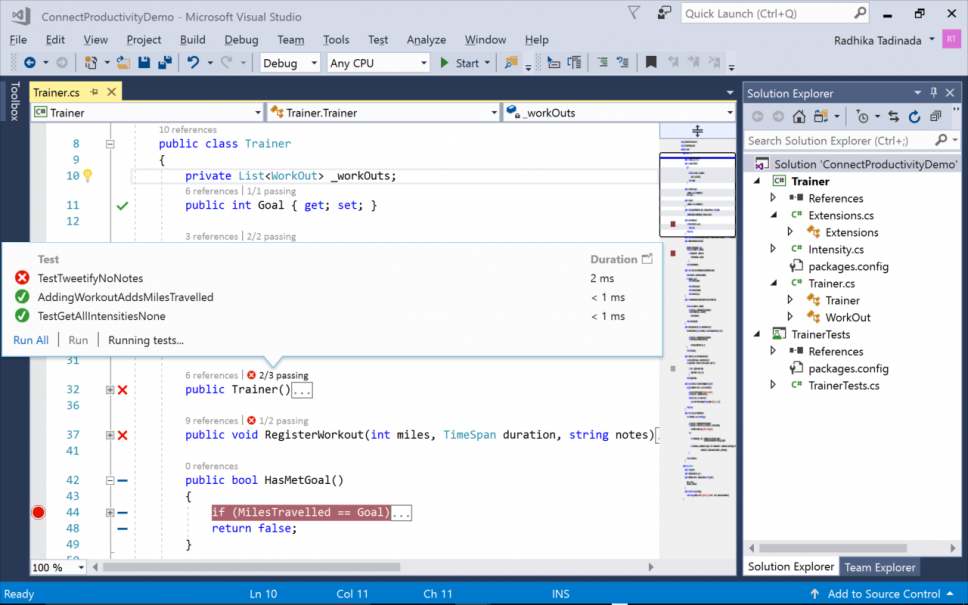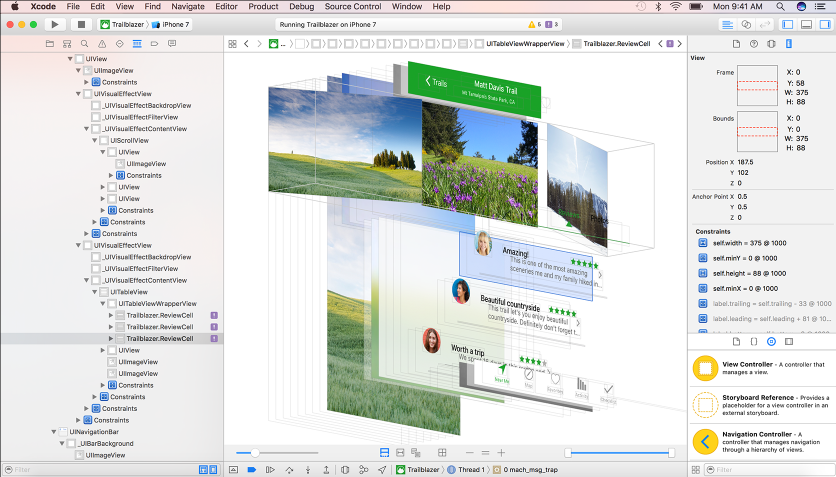42 linux list disk labels
linuxconfig.org › how-to-label-hard-driveHow to label disk in Linux with blkid - Linux Tutorials ... Dec 14, 2021 · This is why labeling a hard disk partition would come in handy. A label like MY_BACKUP is infinitely more helpful than /dev/sda1. To see the device path of all your hard disk partitions, you can use the fdisk command. $ sudo fdisk -l Identifying the device paths of the hard disk partitions with fdisk command Label disk partition examples devconnected.com › monitoring-disk-i-o-on-linuxMonitoring Disk I/O on Linux with the Node Exporter Jun 03, 2019 · On Linux systems, disk I/O metrics can be monitored from reading a few files on your filesystem. Remember the old adage : “On Linux, everything is a file“? Well it could not be more true! If your disks or processes are files, there are files that store the metrics associated to it at a given point in time. A complete procfs tour
ZFS - ArchWiki - Arch Linux Disk labels and UUID can also be used for ZFS mounts by using GPT partitions. ZFS drives have labels but Linux is unable to read them at boot. Unlike MBR partitions, GPT partitions directly support both UUID and labels independent of the format inside the partition. Partitioning rather than using the whole disk for ZFS offers two additional ...
Linux list disk labels
How to get disk partition UUID in Linux - Simplified Guide Universally Unique IDentifier or UUID is a random 128-bit value that can be generated and assigned to partitions or block devices. The partitions or block devices could then be identified using UUID instead of the normal device name such as /dev/sda1.You can then use the UUID to mount filesystem via /etc/fstab by specifying UUID value in a special block device (the first field). What is disk label in Linux? - CompuHoy.com How do I change a disk label in Linux? First step is to select the partition whose label is to be changed, which is Partition 1 here, next step is to select gear icon and edit filesystem. After this you will be prompted to change the label of selected partition. And finally, the label of the partition will be changed. disk - List all partition labels - Ask Ubuntu Simply labels? $ ls /dev/disk/by-label/ Download MuruHome Ubuntu Windows8 arch Or better: $ tree /dev/disk/by-label/ # or use ls -l /dev/disk/by-label/ ├── Download -> ../../sda6 ├── MuruHome -> ../../sdc2 ├── Ubuntu -> ../../sdc1 ├── Windows8 -> ../../sda2 └── arch -> ../../sda1
Linux list disk labels. Shell Script to Check Disk Space Usage - GeeksforGeeks Apr 20, 2021 · Disk usage is a report generated by the Linux system about different disks available or created on the secondary memory. These disks are also known as partitions, they have their isolated filesystem. This facility provides us the measurements of different labels or features like Used space, Free space, Filesystem of the disk, etc. To see all ... How to find Linux filesystem by Label or UUID using findfs, lsblk ... Linux includes by default a bunch of useful filesystem tools that can be used to locate filesystems or partitions with specified tags or display the whole list of block devices along with their labels, universally unique identifiers (UUIDs) or default mount points. Solved: How to label a disk in Linux - Cloud Vedas Step 1 Scan the new LUNS. Step 2 List the available disks and identify the one you want to use. Step 3 Use fdisk to label the disk. Here we are using disk sdb . [root@cloudvedas scsi_host]# fdisk /dev/sdb Welcome to fdisk (util-linux 2.23.2). Changes will remain in memory only, until you decide to write them. Find UUID of Storage Devices in Linux Finding UUID with ls: In Linux, all the devices including the storage devices are represented as files. So, the partitions with UUID set are also represented as files. You can list all these files with the ls command. To list all the partitions and their UUIDs, run the following command: $ ls -l / dev / disk / by-uuid.
How to list disks, partitions and filesystems in Linux? There are many tools for that, for example fdisk -l or parted -l, but probably the most handy is lsblk (aka list block devices):. Example $ lsblk NAME MAJ:MIN RM SIZE RO TYPE MOUNTPOINT sda 8:0 0 238.5G 0 disk ├─sda1 8:1 0 200M 0 part /boot/efi ├─sda2 8:2 0 500M 0 part /boot └─sda3 8:3 0 237.8G 0 part ├─fedora-root 253:0 0 50G 0 lvm / ├─fedora-swap 253:1 0 2G 0 … Getting disk label in Linux in C/C++ - Stack Overflow Sorted by: 1. You can code the C or C++ equivalent of this command: find -L /dev/disk/by-label -inum $ (stat -c %i /dev/sda1) -print. That is, stat () the device file you care about and remember its inode number. Iterate over all of the files in /dev/disk/by-label, and stat () each of them. When the inode number matches, then the name of the ... 4 Ways to Show all Drives (Mounted and Unmounted) on Linux Display all Drives on Linux. To display all of your drives on a Linux system, you can perform any of the following four methods: Method # 1: Using the "fdisk" Command. The "fdisk" command can be used to display the drives in Linux in the manner shown below: $ sudo fdisk -l. The output produced by this command is shown in the following ... How To List Disks on Linux - devconnected The easiest way to list disks on Linux is to use the " lsblk " command with no options. The "type" column will mention the "disk" as well as optional partitions and LVM available on it. $ lsblk Optionally, you can use the " -f " option for " filesystems ". This way, your disks will be listed as well as partitions and filesystems formatted on them.
How To - Linux List Disk Partitions Command - nixCraft lsblk Command to list block device on Linux To list all block devices, run the lsblk command: $ sudo lsblk $ sudo lsblk /dev/DEVICE $ sudo lsblk /dev/sda $ sudo lsblk -l # use the grep command /egerp command to filter out info # $ sudo lsblk -d | grep disk › faq › find-hardHow To Find Out Hard Disk Specs / Details on Linux - nixCraft May 30, 2022 · Linux Check IDE / SATA SSD Hard Disk Transfer Speed; Linux and Unix Test Disk I/O Performance With dd Command; Also do read the following manual pages using the man command or help command to find out about hard disk specs under Linux: $ man lsblk $ man blkid $ man hdparm $ man lshw $ man fdisk $ man smartctl › it-infrastructureIT Infrastructure | IBM With the right servers, storage and technologies, you can apply a zero-trust approach to protect against breaches, keep data private across hybrid ecosystems and unify data protection with cyber resilience. Best Linux Distros Of 2022 - TechRadar May 08, 2022 · Linux distros come in all shapes and sizes. Literally. From miniscule ones that weigh in at just over 100 MB and can be lugged around in USB disks to 4GB behemoths that work best when installed on ...
Three applications for making disc labels - Linux.com But there are some fine open source applications available for creating labels for CD-ROM and DVD disks and printing jewel case inserts, including gLabels, kover, and cdlabelgen. Fedora 9, Ubuntu Intrepid, and openSUSE 11 all provide packages for gLabels 2.2.3 and kover 3, but cdlabelgen 4.1.0 is left out in the cold by all three distributions.
6 Different Ways to List Disks in Linux Command Line Listing Hard Drives in Linux 1. df 2. fdisk 3. lsblk 4. cfdisk 5. parted 6. sfdisk There are several ways to list all the hard drives present in a system through Linux command lines. Keep in mind a hard drive could be physically connected, virtually connected or even emulated (for example: when you use storage devices such as EMC, Sun or IBM).
How to name/label a partition or volume on Linux If you do not see any output produced by e2label command the label for the partition or volume is not yet set. To set a partition. volume label run: # e2label /dev/sda1 Boot OR # tune2fs -L Boot /dev/sda1. Both above commands will set partition label of /dev/sda1 block device to Boot. Please note that the maximum.
How to List all Linux Disk Devices While the correct way to list disk devices in Linux is using the command lsblk, other options are available. The first one to try is fdisk, to list all block devices with fdisk run: # sudo fdisk -l How to show free and used space in Linux disk devices
Where is disk label in Linux? - OS Today Click the "Disk Management" link, and then click your external hard drive's assigned disk. Right-click the disk and click "Change Drive Letters and Paths." How do I find the volume label of a drive? To find the volume label with Command Prompt requires a simple command called the vol command.
linux - List partition labels from the command line - Unix & Linux ... 5. This will not list all partitions but you can view and alter what you like with tune2fs. $ sudo tune2fs -l /dev/sda1. You can use a command such as this to get all the /dev/sda* devices. $ sudo sh -c 'echo /dev/sda* /dev/mapper/fedora* | xargs -n 1 tune2fs -l'. Share. Improve this answer.
How To List Disks on Linux - Junos Notes The easiest way to list disks on Linux is to use the "lsblk" command with no options. The "type" column will mention the "disk" as well as optional partitions and LVM available on it. $ lsblk Optionally, you can use the " -f " option for " filesystems ". This way, your disks will be listed as well as partitions and filesystems formatted on them.
You asked: How do I get a disk label in Linux? - OS Today How do I create a disk label in Linux? First step is to select the partition whose label is to be changed, which is Partition 1 here, next step is to select gear icon and edit filesystem. After this you will be prompted to change the label of selected partition. And finally, the label of the partition will be changed. What is label in Linux?
› shell-script-to-check-diskShell Script to Check Disk Space Usage - GeeksforGeeks Apr 20, 2021 · Disk usage is a report generated by the Linux system about different disks available or created on the secondary memory. These disks are also known as partitions, they have their isolated filesystem. This facility provides us the measurements of different labels or features like Used space, Free space, Filesystem of the disk, etc.
show all unmounted disk labels? - linuxquestions.org Some distros of Linux don't have the /dev/disk/by-label/ directory (mine doesn't) so that can't be used. fdisk -l doesn't show labels (at least it doesn't on mine). There are various tools that let you ask a drive what its label is (e2label, mlabel, ntfslabel, etc.) but they generally require that you know which device it is, which is often ...
How To List Disk Partitions In Linux - OSTechNix There are many ways to view disk partitions in Linux. First, we will start with lsblk command line utlity. 1. List disk partitions in Linux using lsblk command The lsblk utility is used to display information about a specified block device as well as all available block devices, along with their partitioning schemes in Linux.
List Device Names, Disk and Partition Information in Linux with lsblk To see what extra columns lsblk can display, enter the following: lsblk --help. In this scenario you will use ROTA and DISC-GRAN. ROTA tells you if a block device belongs to a rotational storage device. Hard disks are rotational, so the column outputs "1" besides them (binary logical value meaning "true").
Labeling disks in Linux - Solarum There is something interesting under the hood in Linux, and that is the idea of mounting disks via a label, rather than just using a device path. The reason the idea of mounting disks by label came about, is that sometimes the device name or path can change from one boot up to the next, and this would really spell trouble for your system ...
how to list all hard disks in linux from command line There are several different commands that you can use in a Linux environment to list disks that have been mounted on the system. df The df command is primarily intended to report file system disk space usage. It is still a good utility to print out the disks that are available to the system, although it prints filesystems rather than disks per se.
linuxbsdos.com › 2014/11/08 › a-beginners-guide-toA beginner’s guide to disks and disk partitions in Linux Nov 08, 2014 · I am trying to make a partition to install Linux Mint 20.3 on an older Windows 10. I got through the installation and get to the partitions, all is fine. Then i look at the output. Linux installer correctly labels Windows7, windows10 and backup partitions and shows a new linux partition, BUT the output is a Single partition of the entire hard ...
e2label to list all disk labels - linuxquestions.org Location: Mt Umunhum, CA, USA, Earth. Distribution: Debian/ Fedora/ Ubuntu/ Raspbian. Posts: 549. Rep: e2label to list all disk labels. [ Log in to get rid of this advertisement] Hi group, I am having a mental block using e2label to list all disk labels in my system. I know in the past it could be done but I can not remember the format.
How to Change Linux Partition Label Names on EXT4 / EXT3 / EXT2 and Swap Below you can find listing of all such commands. 1. e2label or tune2fs The commands e2label or tune2fs used for changing label of ext2, ext3 and ext4 type partitions. # e2label /dev/sda1 ROOT OR # tune2fs -L ROOT_PART /dev/sda1 Here, ROOT and ROOT_PART are the labels to be added to /dev/sda1 which is ext4 formatted partition. 2. ntfslabel













Post a Comment for "42 linux list disk labels"